Is Horse Racing Cruel?
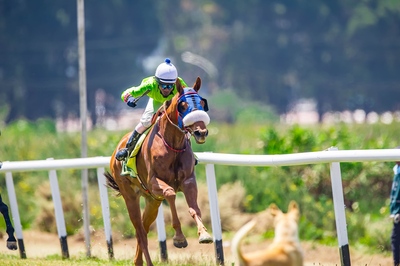 This debate has been going on for a long time now, and the fact that it exists can only be a good thing because it means a race horse’s welfare is always in the spotlight, and rightly so.
This debate has been going on for a long time now, and the fact that it exists can only be a good thing because it means a race horse’s welfare is always in the spotlight, and rightly so.
These animals that are bred for the specific purpose of running for our entertainment deserve a life that is safe and comfortable, with proper care and medical attention when necessary.
The questions raised by those with concerns about horse racing have led to stricter measures being put in place concerning the animals physical and mental health, and there will no doubt be more of this to come; but for some people this is not enough.
A complete end to horse racing is the only acceptable outcome for a die hard group of anti-racing activists, and while that is unlikely to happen any time soon, it shows how widely opinions on the matter can range.
This is a site all about horse racing, so obviously we don’t think that it is cruel, but that doesn’t mean we don’t also see areas where things can and should be improved.
In this article, we will try to give as balanced a view as possible on whether or not horse racing is cruel, but we will be focussing on the UK, as racing standards and animal welfare laws are very different in some other countries, if they exist at all.
The Horse Racing Cruelty Debate
Whenever this topic comes up for debate, whether it be on the news after an on course death or around a table at a coffee ship with friends, a lot of the same points are raised.
We won’t cover every last one here, but the most frequently discussed points are as follows.
The Whip
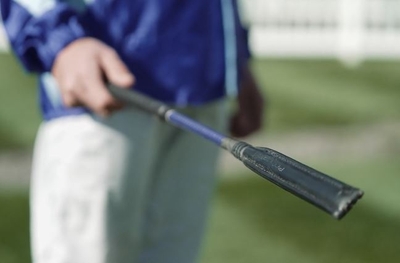
Starting with the most obvious bit of horse racing kit, the whip is used to strike the horse on its’ hind quarters, partly to make it run faster (or maintain speed) but also for safety and correction.
There are strict rules as to when and how the whip can be used:
- Flat Racing – 7 times per race
- National Hunt Racing – 8 times per race
Plus, in all types of racing the whip must not be used above shoulder height, hands and heels must be used first and the whip only applied if these have not worked, the horse must be in contention at the time the whip is used, the horse must be given time to respond to the whip, and it must only be used on certain areas of the horse.
Breaches of these rules are punishable by suspensions which ultimately cost the jockey’s money, and in rare cases official cautions are issued and cases are referred.
Happily, between 2010 and 2020, breaches of the rules plummeted 58% to just 0.40% of all runners, indicating that jockeys are using the whip less often and almost always in line with the rules.
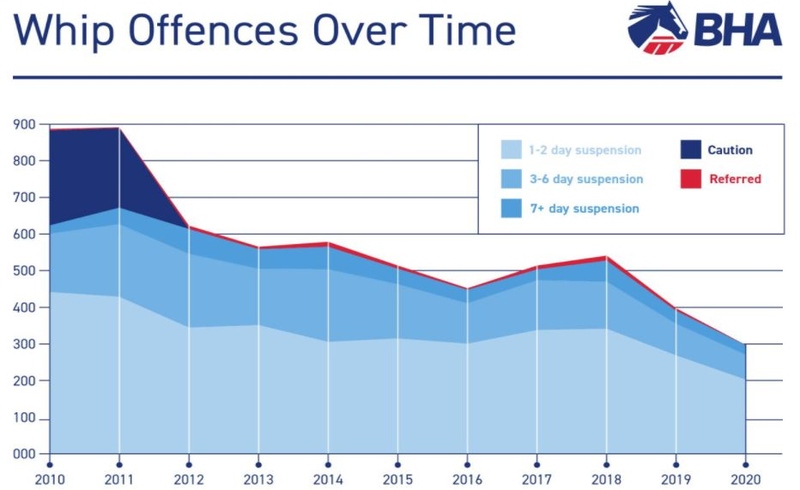
In total, there were 73, 872 runners in 2020, and here you can see the details of that years offences broken down by the severity of the punishment:
| 1-2 Day Suspension | 3-6 Day Suspension | 7+ Day Suspension | Referred |
|---|---|---|---|
| 203 | 68 | 26 | 0 |
| 54% < 2010 | 57% < 2010 | 13% > 2010 | 100% < 2010 |
The whip itself was designed with input from the RSPCA, and is foam padded and air cushioned to ensure it does not inflict pain on the horse. There is also only a single supplier in the UK to ensure standards are met.
Before each race, each jockey’s whip is checked by the Clerk of the Scales and any that are deemed unfit must be replaced.
However, some people say the whip does indeed cause the horse pain and stress, and even though they were consulted in the design, the RSPCA have called for whips to be scrapped altogether.
Tongue Ties
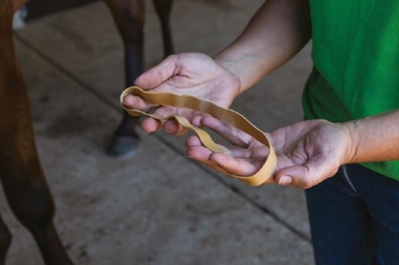
These are like big elastic bands which are tied around the horse’s tongue and then around their lower jaw.
The purpose is to stop the tongue from restricting the horse’s airway during a race, which is both a safety measure and a way to ensure the horse is getting the vital oxygen its body needs to compete at the highest standard.
They are usually only left on for the duration of the race or training session, so the horse shouldn’t be wearing them for more than 20-30 minutes, and not all trainers use them in the first place.
It doesn’t look very nice but horses don’t seem to be bothered by them, and although research in this area is a little thin on the ground there have been a few studies done; however, the results are mixed, with some showing tongue ties to be perfectly humane, and others showing that they cause stress and discomfort.
There is yet to be an official outcome on tongue ties, but the RSPCA are against them too.
The Training & Racing
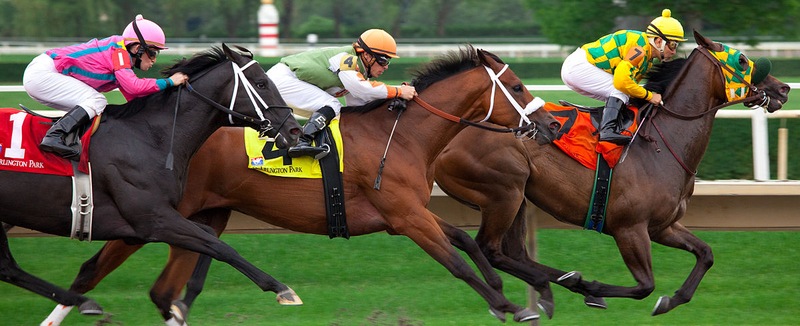
The fact that horses are pushed to their limits, like an Olympian sprinter would be, is often raised as an issue in and of itself.
The point here is that the horse is not racing of their own free will but because they have been trained to, sometimes using methods that give them very little choice.
Some of the equipment used in training, for example, forces the horse to run at faster speeds in order to increase their stamina. Although this is done gradually to build them up, it is the equivalent of someone sticking you on a treadmill and not letting you get off even if your legs were turning to jelly.
Most trainers would not push a horse so far that it became distressed – they know their horses very well and have their best interests at heart – but the fact remains that they don’t have a say in the matter.
When it comes to competitive racing, horses can suffer career ending and even life ending injuries, especially in National Hunt racing.
The number of fatalities in jumps is significantly higher than it is with flat racing, but the combined number of fatalities compared to runners each year was only 0.18% in 2020 (135 horses), with a 5 year rolling average of 0.19%.
Compared to 10 years earlier when the numbers were 0.24% (224 horses) and 0.23% respectively and things are clearly getting better.
You can see how things have progressed in the table below:
| Year | # of Runners | # Horses Killed | Percentage |
|---|---|---|---|
| 2010 | 92,436 | 224 | 0.24% |
| 2011 | 94,776 | 181 | 0.19% |
| 2012 | 90,518 | 211 | 0.23% |
| 2013 | 91,146 | 196 | 0.22% |
| 2014 | 86,456 | 189 | 0.22% |
| 2015 | 88,377 | 156 | 0.18% |
| 2016 | 89,975 | 171 | 0.19% |
| 2017 | 91,380 | 167 | 0.18% |
| 2018 | 93,004 | 202 | 0.22% |
| 2019 | 91,937 | 173 | 0.19% |
| 2020 | 73,872 | 135 | 0.18% |
This is down to the many changes introduced by the British Horse Racing Authority, which are varied and many. But using the Grand National as an example they include:
- Building padded hurdles from more forgiving materials which reduced the fall rate by 15%.
- Evening out the landing side of the fences so that the horses jump from and land at the same level.
- Introducing misting fans to ensure horses are cooled down immediately after they race.
- Moving the starting point further from the grandstand so the start of the race is less frantic for the horses, giving them a calmer start.
As evidence of their effectiveness, no horses suffered fatal injuries from when these changes were made in 2012 to 2019, a 6 year run and the longest by far in recent history.
Wastage
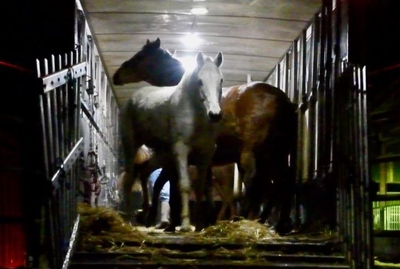
This rather cold and clinical term refers to what happens to retired race horses when no one wants them anymore.
In order to produce top quality race horses, an awful lot of the animals are bred and trained in the first place. It’s a case of ‘if you throw enough mud at the wall, some of it will stick’.
But not every horse can become a champion, which leads to thousands being retired from the sport each year. The average age of retirement for a horse is between 2 and 10 (although some don’t even make it through training), and since a thoroughbred can live for 25 years this leaves a lot of horses with many years still on the clock but nowhere to go.
Their owners bought them as an investment, and once they are no longer valuable they mostly want rid of them, and although they would no doubt prefer them to live happily ever after, at the end of the day they are expensive to own if they aren’t earning their keep.
This, very sadly, means many are sent to be euthanised.
The killing of so many horses each year is a tragedy and the morality of it is a topic of debate in itself, but it is also a major point of contention in this debate because there are no official records of what happens to them.
There are guidelines for humane killing of course, but as undercover reporters have found out in the past, these are not always followed.
Supposedly, the animals would be transported comfortably and not for extended periods of time (especially if injured), before being led calmly to the point where they will be put down painlessly with a bullet or bolt to the temple. The horse should be completely unaware of its fate.
Outrageously, this is not always the way things go, and a 2021 Panorama investigation recorded many breaches in these rules as well as horses who were extremely stressed before they were killed with no care or respect.
In the past, they could be sent to abattoirs and then be sold for meat, although the BHA has banned this as of January 2022. It should be said though that most trainers and owners were already against this practice in the first place, and the findings in the Panorama investigation are not commonplace.
Humane euthanasia is still acceptable though, so long as it happens on private premises or in a suitable location, i.e, not an abattoir.
Where you stand on this will depend on many factors, but anyone who is happy enough to eat meat should logically be ok with humane euthanasia. For many people though, the practice is simply not acceptable in any way, shape or form.

Re-homing is the ideal outcome, and this does happen a lot, with ex racers going on to re-train as show jumpers, dressage, polo horses, hackers, and all sorts of other things too.
On average, 7,000 race horses are retired each year, and many trainers even continue to support the rehoming process by accepting the horse back into their stable to rehome it again if the first attempt doesn’t work out for any reason.
There is also £1.4 million invested by British Racing to support the re-homing of retired race horses, although if you work that out it comes to around £200 per horse per year based on 7,000 retirements per year, which isn’t much.
Nevertheless, an estimate of 4,000 horses were euthanised between the start 2019 and the end of 2020, which is about 2,000 per year. Yes, that’s 2,000 too many, but it does mean that 5,000 of the 7,000 retired race horses have gone on to lead new lives elsewhere.
Is Horse Racing Cruel: General Consensus
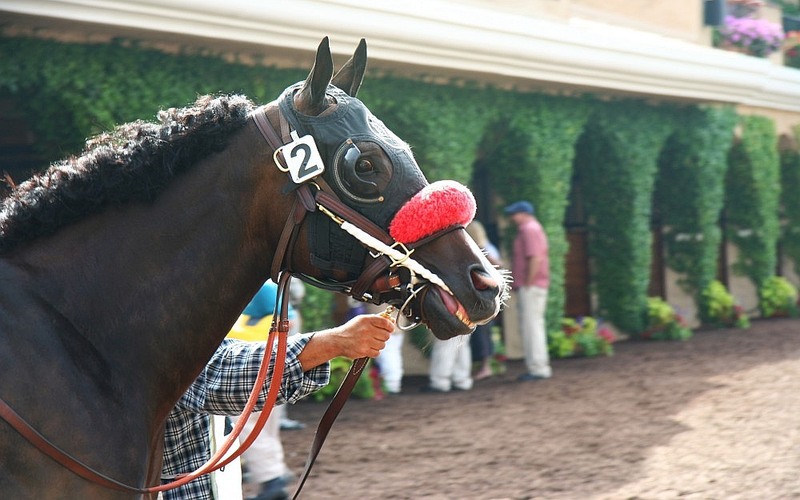
Like a lot of things, the overall view on whether or not horse racing is cruel isn’t clear cut.
On the one hand, you could say the fact that it is legal and that there are regulations in place to protect the animals and ensure their health must mean that it is fine; on the other, you could doubtless find numerous reported cases of horse cruelty from undercover reporters and charities trying to bring down the sport.
The average guy or girl on the street probably doesn’t have too much of an opinion on it one way or another, but we can explore the question by looking at each side of the argument from one extreme to another.
The horse racing industry will of course talk up all of the rules put in place that benefit the horse, and highlight cases where welfare is shown at its best; while those activist charities who are against horse racing will go out of their way to find evidence of cruelty and push studies that support their narrative.
So what do those on the extremities of each side of the debate say?
The Industry View
 The British Horse Racing Authority oversees the industry and in this respect it is self regulated. This means that there are no outside organisations checking in on what is going on or policing the rules.
The British Horse Racing Authority oversees the industry and in this respect it is self regulated. This means that there are no outside organisations checking in on what is going on or policing the rules.
This leaves them open to criticism somewhat, but the BHA are well known for self-scrutiny, so their reputation is good and they are generally held in high regard.
Their take is that horse racing is an elite sport, and like all elite sports there is an element of risk, both to the horses and to the riders.
They focus on the constantly improving standards, the undeniable drop in on course fatalities over the last 20 years, and the money they have invested in veterinary science and the like in order to find new ways to improve safety standards.
They are less vocal on what happens to horses after their racing careers have ended, but this issue is increasingly being discussed in public forums.
After a 2021 Panorama investigation which exposed the awful conditions suffered by horses travelling from Ireland to an abattoir in Swindon, UK, they said:
“The British racing industry, and the 7000 and more staff who look after our horses day-in, day-out, across Britain, are proud of the unparalleled standards of love, care, attention, and respect our horses receive. Where end-of life decisions are being considered, we want these to take place in accordance with the euthanasia guidelines developed by the industry’s Horse Welfare Board. These aim to ensure that horses’ welfare is protected and that all available options for rehoming are examined.
They would also point out that there is a charity set up to help with the rehoming of racehorses, and stress that they are continually looking for ways to improve standards across the board, from the day a horse is born to the day it dies.
One example of this would be the research they conducted into a horse’s colour vision, with findings suggesting a fluorescent yellow strip at the top of jumps would make the obstacles easier for the horse to see.
The Animal Activist View
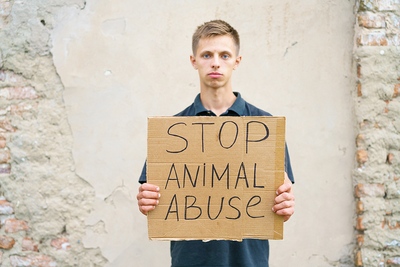 On the opposite side of the debate are those who would have the sport of horse racing banned full stop, calling it little more than subsidised animal cruelty and a national disgrace.
On the opposite side of the debate are those who would have the sport of horse racing banned full stop, calling it little more than subsidised animal cruelty and a national disgrace.
Their opinion is that humans have no right to own, control, keep, or eat any animal, which leaves very little room for negotiation – it’s a ‘my way or the highway’ kind of stand point so improvements are not enough for them.
In their view, the fact that a horse can be seen and used as a commodity before anything else is simply unacceptable.
Of course, there are also people who sit somewhere in the middle, but those most vehemently against the sport would have it shut down for good.
They would point out that race horses suffer unfairly for the entertainment of humans, whether that be in the physical exertion they are forced to endure or the restricting, uncomfortable, and sometimes painful equipment that is used to train and ride them.
What’s more, the fact that horses are sometimes ridden to the point of injury and even death is a major reason that activists feel the whole sport should be shut down.
It is not just what happens during the horse’s career though, even the way they are kept can be called into question.
An activist might remind you that horses are social creatures who are born to run wild, not be kept in small stables and only brought out at the behest of their keepers.
Activist organisations might even go undercover to try and find and record the mistreatment of horses, then make videos where these clips are edited together to shocking effect.
Conclusion
It’s not for us to push our opinion in this article, but by way of conclusion we would say that the horse racing industry is making a concerted effort to improve wellbeing standards for race horses, both during and after their careers, but there is still plenty more to do.
No matter how hard protestors push, it’s highly unlikely that the sport will be banned any time soon, but their voices are bringing attention to some of the inescapably awful things that can happen such as inhumane euthanasia.
They also make the industry constantly question the methods being used to train, transport, and race the horses, which is why so many positive changes have been implemented over the last decade or so.
Most people who work in the horse racing industry love their animals, and only want the best for them. Indeed, it makes perfect sense for them to be treated with respect and compassion if their owners and trainers want them to race well, but there will always be certain characters who let the side down.
Ultimately, the cruelty debate is an important one that has brought about numerous improvements both on and off the race course, giving already responsible horse owners and trainers a set of guidelines to work with and forcing the few who might be inclined to put profit before welfare into line.
